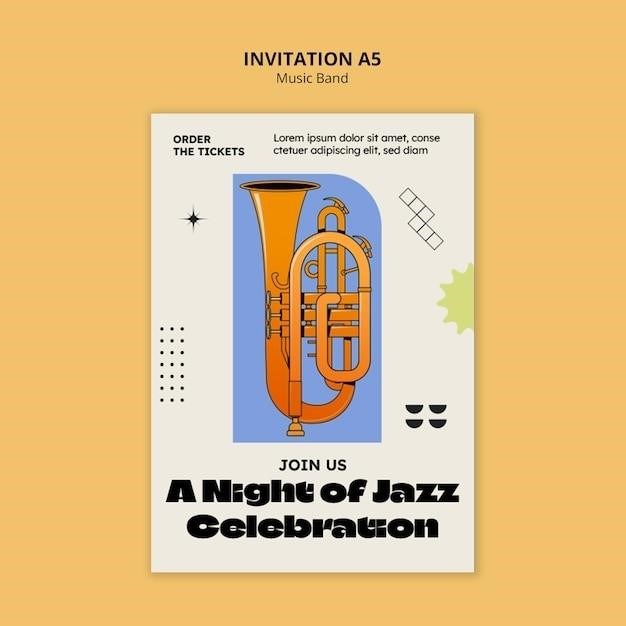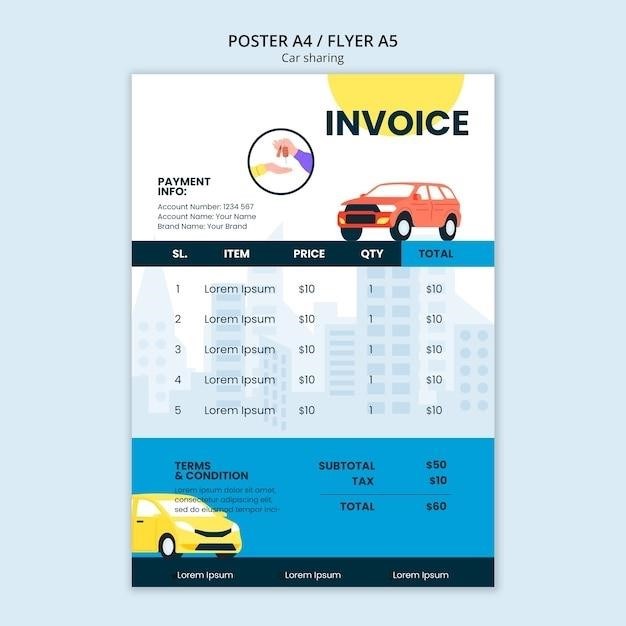Morceau Symphonique for Trombone and Piano
The “Morceau Symphonique” for trombone and piano is a popular piece composed by Alexandre Guilmant. It is a staple in the trombone repertoire and is often performed by soloists and ensembles alike. The piece is known for its lyrical melodies, virtuosic passages, and dramatic contrasts. The “Morceau Symphonique” is available in various arrangements and versions, including solo trombone with piano accompaniment, trombone and organ, and even trombone quintet. It is a widely accessible piece, with numerous online resources offering free sheet music and recordings.
Alexandre Guilmant’s Composition
Alexandre Guilmant’s “Morceau Symphonique,” Opus 88, is a captivating composition for trombone and piano, showcasing his mastery of both melodic and harmonic elements. Composed in 1902, the piece is characterized by its expressive nature, its combination of lyrical and virtuosic passages, and its dramatic contrasts. While Guilmant is primarily known for his organ works, “Morceau Symphonique” demonstrates his ability to write effectively for other instruments, particularly the trombone. The piece is often described as a “symphonic movement” due to its grand scale and sweeping melodies. While the “Morceau Symphonique” is a solo trombone piece, it is often accompanied by a piano rather than the traditional orchestra. This adaptation allows for a more intimate and chamber-like performance, highlighting the expressive capabilities of the trombone.
Description and Instrumentation
Alexandre Guilmant’s “Morceau Symphonique” is a two-movement piece, traditionally performed in E-flat major. The first movement, an introduction, is in E minor and sets the tone for the piece, featuring a somber and introspective character. The second movement, marked “Allegro moderato,” transitions into E-flat major and showcases the piece’s more lyrical and energetic aspects. “Morceau Symphonique” is written for solo trombone and piano, allowing for a rich and complex dialogue between the two instruments. The piano accompaniment provides a harmonic foundation for the trombone solo, supporting its melodic lines and creating a sense of depth and texture. The trombone part is often challenging, requiring technical proficiency and musical expressiveness. The piece demands a nuanced understanding of phrasing, articulation, and dynamics to bring out the full range of its musical emotions.
Notable Features
One of the most striking features of “Morceau Symphonique” is its dramatic contrast between the first and second movements. The first movement, with its somber E minor tonality, creates a sense of introspection and longing. This contrasts sharply with the second movement’s bright and energetic E-flat major, which evokes a feeling of joy and triumph. The piece also showcases a wide range of musical ideas and techniques. It features lyrical melodies, virtuosic passages, and moments of quiet introspection. “Morceau Symphonique” is also known for its use of extended techniques, such as multiphonics and glissandi, which add a unique sonic texture to the piece. These techniques challenge the trombone player to explore the full expressive potential of their instrument. The piece’s use of dynamic contrast is another notable feature. From hushed pianissimos to powerful fortissimos, “Morceau Symphonique” creates a dynamic and engaging listening experience.
Performance and Interpretation
Performing “Morceau Symphonique” effectively requires a high level of technical proficiency and musical sensitivity. The piece demands precise articulation, a smooth legato, and a wide dynamic range. The player must also be able to navigate the piece’s challenging technical passages with ease and precision. The interpretation of “Morceau Symphonique” is open to a wide range of possibilities. Some players may choose to emphasize the piece’s lyrical qualities, while others may prefer to focus on its dramatic contrasts. The tempo and dynamics can also be manipulated to create different interpretations. Ultimately, the best performance of “Morceau Symphonique” is one that reflects the performer’s unique musical personality and understanding of the piece. The interaction between the trombone and the piano is crucial to a successful performance. The pianist must provide a sensitive and responsive accompaniment that supports the soloist without overshadowing them.
Arrangements and Adaptations
The popularity of “Morceau Symphonique” has led to various arrangements and adaptations for different ensembles and instrumentation. While the original composition is for trombone and piano, it has been transcribed for other instruments and ensembles, including trombone quintet, brass band, and even solo trombone with organ accompaniment. These arrangements often retain the essence of the original work while adapting it to the specific capabilities of the new instrumentation. The accessibility of “Morceau Symphonique” in different versions allows for a broader range of performers to experience and enjoy this classic piece. The availability of arrangements for different ensembles also offers opportunities for collaborative performances, bringing together musicians from various backgrounds and skill levels to share in the musical experience.

Availability and Accessibility
The “Morceau Symphonique” is widely available and accessible to musicians of all levels. Numerous online platforms offer free sheet music in PDF format, allowing aspiring and experienced trombonists to download and print the score for practice and performance. These platforms often feature different arrangements and versions of the piece, catering to various skill levels and ensemble configurations. The accessibility of “Morceau Symphonique” through online resources promotes the sharing and dissemination of musical knowledge, making it easier for musicians to learn and perform this classic piece. Additionally, the availability of recordings by renowned trombonists provides valuable reference material for aspiring musicians, allowing them to study the interpretation and techniques of experienced performers.
Historical Context
Alexandre Guilmant composed the “Morceau Symphonique” in 1902, a period marked by a flourishing of Romantic music. The late 19th and early 20th centuries witnessed a surge in interest in solo trombone repertoire, with composers seeking to showcase the instrument’s expressive capabilities beyond its traditional role in orchestral and band settings. The “Morceau Symphonique” exemplifies this trend, demonstrating Guilmant’s understanding of the trombone’s unique sonic qualities and his ability to craft a piece that is both technically challenging and musically engaging. The work’s composition coincided with a period of growing recognition for the trombone as a solo instrument, and its enduring popularity attests to its contribution to this developing tradition.
Reception and Legacy
The “Morceau Symphonique” has enjoyed a consistent reception among trombonists since its premiere. Its blend of technical demands and musical expressiveness has made it a popular choice for recitals, competitions, and educational settings. The piece has been praised for its lyrical melodies, dramatic contrasts, and virtuosic passages that showcase the instrument’s versatility. Its enduring popularity has cemented its place as a standard in the trombone repertoire, with numerous recordings and arrangements further amplifying its legacy. The “Morceau Symphonique” has inspired generations of trombonists, serving as a benchmark for technical proficiency and musical artistry. Its continued relevance testifies to its lasting impact on the trombone world.
Modern Interpretations
The “Morceau Symphonique” continues to resonate with contemporary trombonists, inspiring fresh interpretations and arrangements. Modern performers often explore the piece’s dramatic contrasts and lyrical melodies with a contemporary sensibility, incorporating stylistic elements from various genres. Some musicians emphasize the piece’s virtuosic passages, showcasing the instrument’s technical capabilities with flair and precision. Others prioritize the work’s expressive qualities, emphasizing its emotional depth and nuanced phrasing. The “Morceau Symphonique” serves as a canvas for artistic exploration, allowing performers to imbue it with their own unique musical vision. These modern interpretations demonstrate the enduring relevance of Guilmant’s composition, ensuring its continued presence in the trombone repertoire for generations to come;
Educational Value
The “Morceau Symphonique” holds significant educational value for aspiring trombonists. Its accessible yet challenging nature makes it an ideal piece for developing technical proficiency, musicality, and expressiveness. The piece’s lyrical melodies provide opportunities for students to refine their phrasing and articulation, while its virtuosic passages encourage the development of dexterity and stamina. The “Morceau Symphonique” also offers a valuable platform for exploring dynamics, musical phrasing, and interpretation. By engaging with this well-crafted composition, young musicians can gain a deeper understanding of musical structure, form, and the expressive potential of the trombone. The “Morceau Symphonique” serves as a stepping stone in the development of a young trombonist’s musical journey, laying a foundation for future musical exploration and growth.
Alexandre Guilmant’s “Morceau Symphonique” remains a cornerstone of the trombone repertoire, captivating audiences and challenging performers with its musical depth and technical demands. Its widespread availability, from free online resources to published scores, ensures its accessibility for both students and seasoned professionals. The piece’s enduring popularity is a testament to its timeless appeal, offering a blend of lyrical beauty, technical brilliance, and expressive potential that continues to resonate with audiences today. Whether performed in a concert hall or a practice room, the “Morceau Symphonique” continues to inspire and elevate the art of trombone playing, solidifying its place as a cherished and enduring masterpiece.



Leave a Reply
You must be logged in to post a comment.